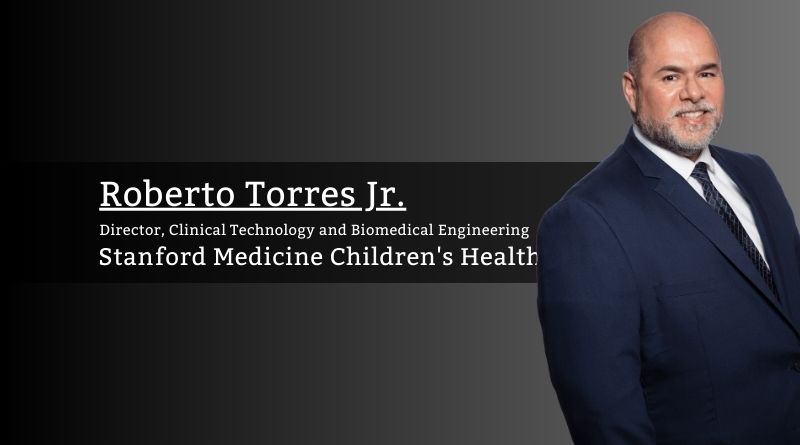Just another day in the ORs
By Roberto Torres, Jr., Director, Clinical Technology and Biomedical Engineering, Stanford Medicine Children’s Health
One of the most challenging areas to support in our hospitals is the procedure areas. Whether they be the OR rooms, the cath lab rooms or the interventional radiology rooms, these rooms contain not only a high volume of equipment but also some of the most complex equipment in our medical centers. Not only does this equipment require a high level of support, but it is also some of the most expensive equipment as well. The reason for this is because of the delicate procedures that are happening in these rooms and the invasive nature of what is being done. Managing such a high demand area requires a special approach to not only ensure positive patient outcomes but also to stay within the business expectations of the medical center. Our team of clinical engineers and biomedical technicians play a vital role in ensuring these outcomes.
Of the many priorities we manage, the highest priority is patient safety. There must be a delicate balance between the various teams that interact with each other before, during and after each case. There is a beautiful relationship within these departments where everyone knows what to do and when, ensuring that the intervention proceeds without any issues. Communication is key. Some of the tools we use to communicate beyond our phones are cameras to check in on rooms and the progress of the case in that room. Other teams can also use the camera as they may be on the ready should a case be nearing its end and may need a turn-over very soon.
Working with OR Leadership and brainstorming about how to best support the technology within these special areas is crucial to having an effective and efficient program.
Leadership plays an important role in setting the expectations for when and how things should happen as patients are being brought in, taken care of, and brought out. This includes careful planning of the types of cases that are to be performed at the facility and the equipment that will be needed for those cases. There must be thoughtful planning for the capital equipment, instruments, training and workflows that will ensure the best outcomes. Clinical engineering can assist in all phases of these plans to ensure the right technology is sourced, evaluated for compatibility in the institution and has the proper support once the device is acquired.
One of the biggest ‘gotchas’, especially in the OR space, is not considering the total cost of ownership of these costly devices such as navigation, robotics, and intra-operative imaging including the very highly specialized accessories that come with these devices, such as the flexible scopes for endoscopy cases. Facilities should be proactive in looking beyond the first year of warranty and determine how much will be the cost to keep that device working properly, what will be required to repair it in case of a breakdown and what will be the cost of any extended warranties.
To stay abreast of the latest and greatest technology, a hospital should have a capital equipment life cycle planning that may look at least a few years into the future to predict what equipment will be coming to the end of life and may require replacement. If done properly, this will avoid unwarranted failures and ensure the hospital is always current with its medical equipment.
At our facility, we have weekly tag-up meetings with our OR leadership to discuss hot topics regarding equipment maintenance and review medical equipment service agreements that are due to expire in the next quarter. This allows time to request renewal quotes, review them, make any adjustments and process them before the end of the term. Having continuity in service ensures that equipment is always working properly and available for use.
Some of our most pressing challenges regarding medical equipment include tracking the mean time between failures. If this number is too low, then this may be pointing to a larger issue. We had an example where we discovered high breakage volumes of scopes due to improper techniques by clinical users. At this point, we instituted user training to help the clinician not break the equipment. At other times, it was discovered that the breakages were happening as the equipment was being processed for cleaning and disinfection. This proved to be an opportunity to train the sterile processing teams on better handling techniques. Knowing how your equipment is failing is key to having high reliability and equipment that is ready to be used at any given time.
Another of our secret weapons to help support the technology in this very delicate space is the collaboration with other technical teams. Our clinical engineering team is already in scrubs working in the OR space, but if the need is for a different team to be present, this may cause delays in service due to long arrival times. A creative solution is to empower those technical folks that are already in the OR spaces with a little information so they may be effective in solving simple but high-volume calls. Allowing our team to be flexible in responding to minor calls that may fall outside of their normal workflow will empower them to increase uptime, improve customer satisfaction and reduce service delays.
Working with OR Leadership and brainstorming about how to best support the technology within these special areas is crucial to having an effective and efficient program. Having positive relationships with the various levels of staff also helps improve communications so that information can be delivered promptly and accurately. There are many nuances to supporting the procedure spaces, but when done properly, everyone feels supported and work becomes just another day in the ORs.



